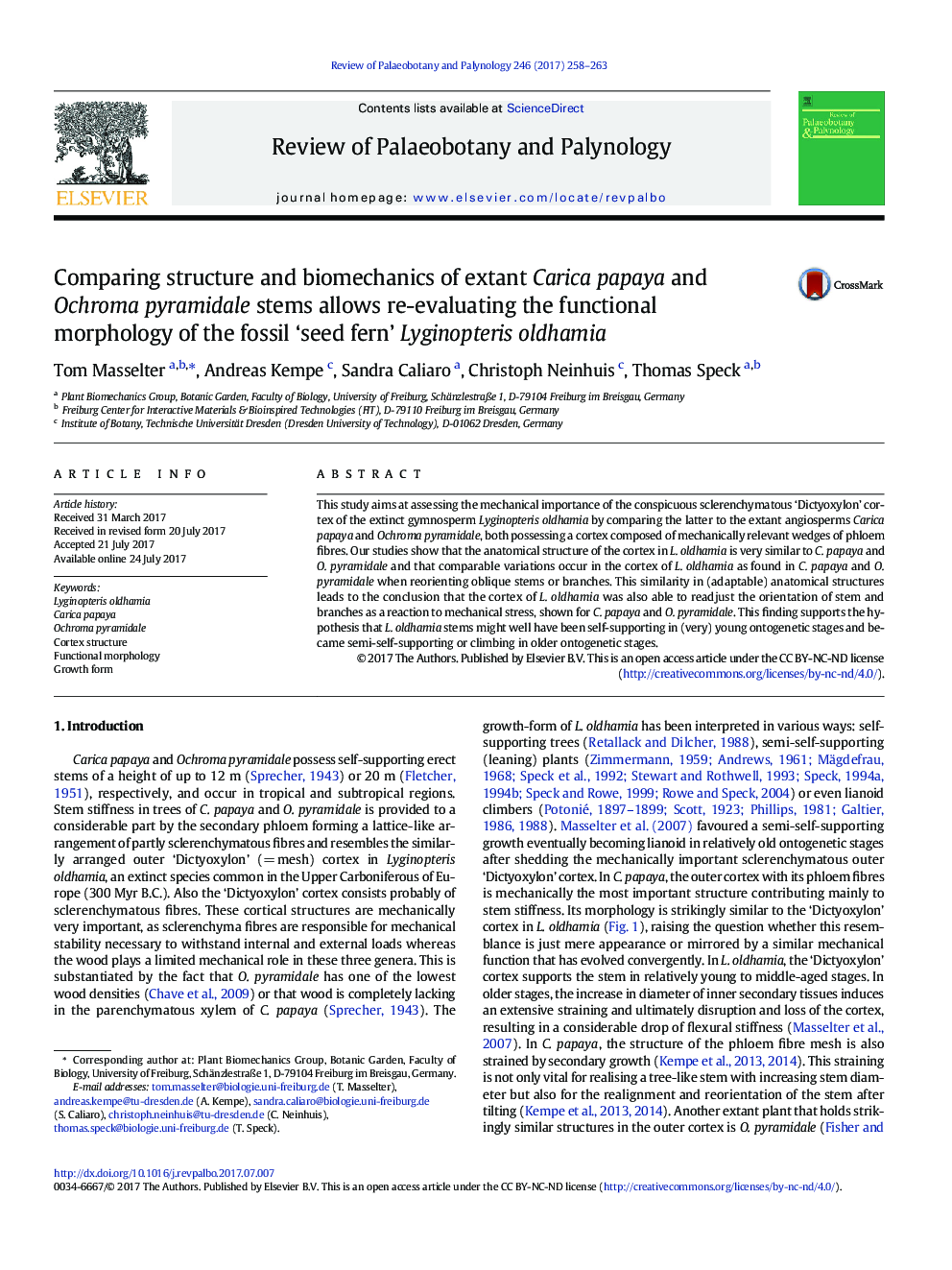| Article ID | Journal | Published Year | Pages | File Type |
|---|---|---|---|---|
| 5788325 | Review of Palaeobotany and Palynology | 2017 | 6 Pages |
â¢The functional morphology of two extant species and one fossil species is compared.â¢The anatomical structure of the cortex of all three species is very similar.â¢The fossil plant was also able to readjust the orientation of stems and branches.â¢By this, the self-supporting phase of the fossil plant might have been extended.
This study aims at assessing the mechanical importance of the conspicuous sclerenchymatous 'Dictyoxylon' cortex of the extinct gymnosperm Lyginopteris oldhamia by comparing the latter to the extant angiosperms Carica papaya and Ochroma pyramidale, both possessing a cortex composed of mechanically relevant wedges of phloem fibres. Our studies show that the anatomical structure of the cortex in L. oldhamia is very similar to C. papaya and O. pyramidale and that comparable variations occur in the cortex of L. oldhamia as found in C. papaya and O. pyramidale when reorienting oblique stems or branches. This similarity in (adaptable) anatomical structures leads to the conclusion that the cortex of L. oldhamia was also able to readjust the orientation of stem and branches as a reaction to mechanical stress, shown for C. papaya and O. pyramidale. This finding supports the hypothesis that L. oldhamia stems might well have been self-supporting in (very) young ontogenetic stages and became semi-self-supporting or climbing in older ontogenetic stages.
